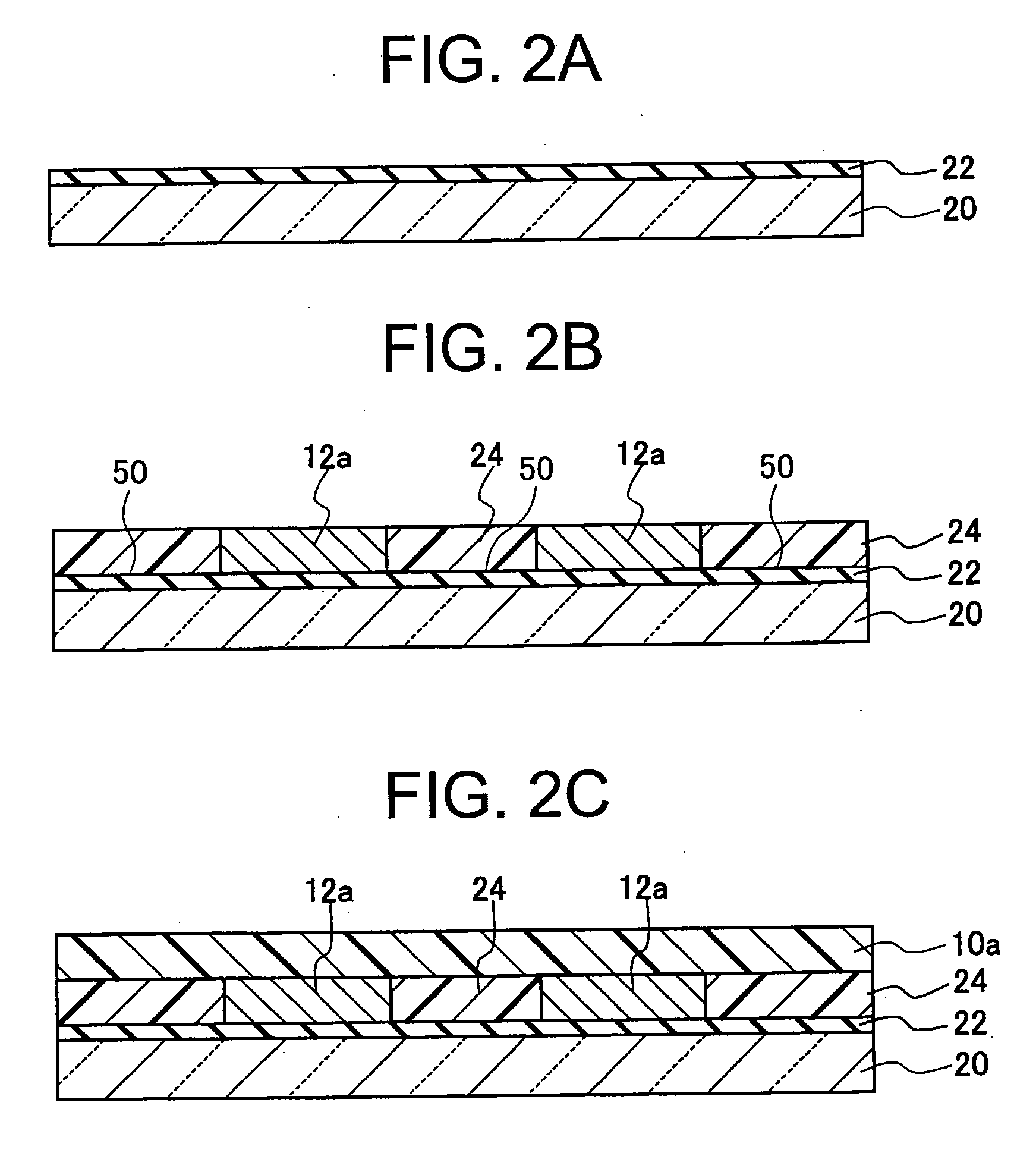Release layer paste and method of production of multilayer type electronic device
- Summary
- Abstract
- Description
- Claims
- Application Information
AI Technical Summary
Benefits of technology
Problems solved by technology
Method used
Image
Examples
example 1
[0150] Preparation of Release Layer Paste
[0151] Preparation of Additive Slurry
[0152] First, as the additive (subcomponent) materials, (Ba, Ca) SiO3 in an amount of 1.48 parts by weight, Y2O3 in 1.01 parts by weight, MgCO3 in 0.72 part by weight, MnO in 0.13 part by weight, and V2O5 in 0.045 part by weight were prepared. Next, the prepared additive (subcomponent) materials were mixed to obtain the additive (subcomponent) material mixture.
[0153] Next, the additive material mixture in an amount of 4.38 parts by weight was mixed and pulverized with ethyl acetate in 13.9 parts by weight using a ball mill to obtain an additive slurry. The mixing and pulverization were performed using a 250 cc polyethylene resin vessel charged with 450 g of 2 mmφ ZrO2 media at a peripheral speed of 45 m / min for 20 hours. The pulverized additive material had a particle size of a median size of about 0.1 μm.
[0154] Preparation of Primary Slurry
[0155] Next, the entire amount of the obtained additive slurr...
example 2
[0189] The same procedure was performed as in Example 1 to prepare a release layer paste except for changing the acid value of the acryl resin as shown in Table 1. The results were similarly evaluated (Samples 1, 2, 4, and 5). The results are shown in Table 1.
TABLE 1Acryl acid valueElectrodelayer andCeramicAmountAmount ofPETblank patternpowderof resinplasticizerAcidpeelingElectrodelayer peelingSurfaceSam-(parts by(parts by(parts byvaluestrengthSheetPrint-Sheetprintingstrengthroughnesspleweight)weight)weight)P / B(mgKOH / g)(mN / cm)attackabilityresiduestate(mN / cm)Ra(μm)1Comp.10050251.33010.5GGPP13.30.112Ex.2Ex.10050251.33110.5GGGG14.40.083Ex.10050251.33510.5GGGG15.90.0774Ex.10050251.331010.5GGGG170.0785Comp.10050251.331510.5GGPP23.10.110Ex.
[0190] As shown in Table 1, when the acid value was 0 mgKOH / g, the surface roughness increases. Further, when the acid value was 15 mgKOH / g, the peeling strength and surface roughness of the electrode layer increased. As opposed to this, it could be c...
example 3
[0191] The same procedure was performed as in Example 1 to prepare a release layer paste except for changing the contents of the acryl resin and the plasticizer (parts by weight) with respect to 100 parts by weight of ceramic powder so as to change the content of acryl resin (parts by weight) with respect to 100 parts by weight of ceramic powder and the ratio (P / B) of the ceramic powder and, the acryl resin and plasticizer as shown in Table 2. The results were similarly evaluated (Samples 6 to 10). The results are shown in Table 2.
TABLE 2Electrodelayer andCeramicAmountAmount ofPETblank patternpowderof resinplasticizerAcidpeelingElectrodelayer peelingSurfaceSam-(parts by(parts by(parts byvaluestrengthSheetPrint-Sheetprintingstrengthroughnesspleweight)weight)weight)P / B(mgKOH / g)(mN / cm)attackabilityresiduestate(mN / cm)Ra(μm)6Comp.1006311.11510.5P*PPP10.90.097Ex.7Comp.1001265.56510.5P*PPP13.30.088Ex.8Ex.10024122.78510.5GGGG12.80.0793Ex.10050251.33510.5GGGG15.90.0779Comp.100100500.67510....
PUM
| Property | Measurement | Unit |
|---|---|---|
| Percent by mass | aaaaa | aaaaa |
| Percent by mass | aaaaa | aaaaa |
| Percent by mass | aaaaa | aaaaa |
Abstract
Description
Claims
Application Information
 Login to View More
Login to View More - R&D
- Intellectual Property
- Life Sciences
- Materials
- Tech Scout
- Unparalleled Data Quality
- Higher Quality Content
- 60% Fewer Hallucinations
Browse by: Latest US Patents, China's latest patents, Technical Efficacy Thesaurus, Application Domain, Technology Topic, Popular Technical Reports.
© 2025 PatSnap. All rights reserved.Legal|Privacy policy|Modern Slavery Act Transparency Statement|Sitemap|About US| Contact US: help@patsnap.com



